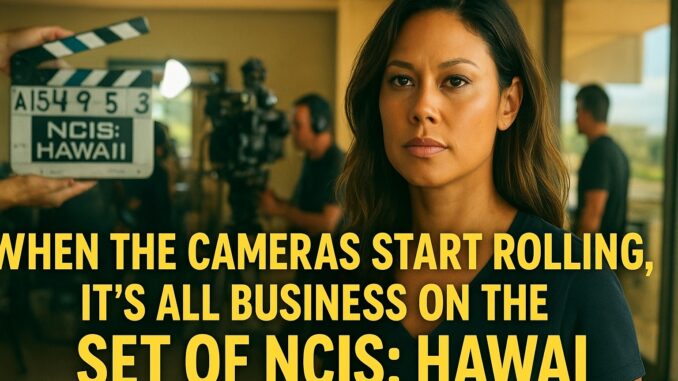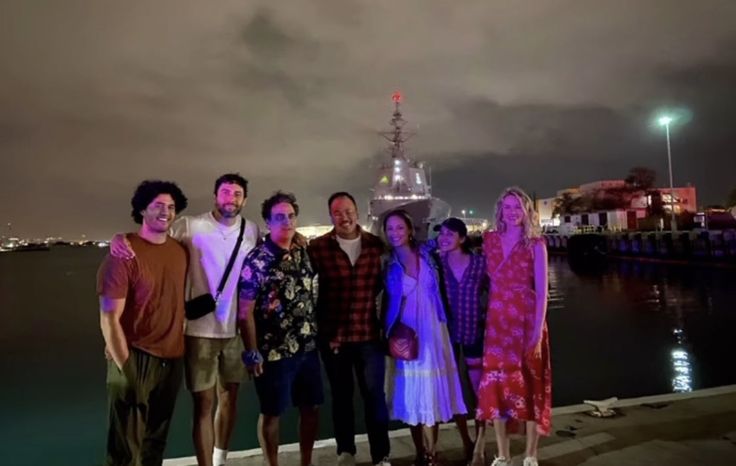
Lights. Camera. Action. That’s the magic phrase we all know, but what actually happens when the cameras start rolling on the set of NCIS: Hawaii? From the outside, it looks like a sleek, fast-paced procedural with breathtaking shots of Oahu. But behind the lens, it’s a finely tuned machine where professionalism, creativity, and hard work collide. Let’s pull back the curtain and dive deep into the business of NCIS: Hawaii.
The Magic of NCIS: Hawaii
NCIS: Hawaii isn’t just another crime drama—it’s a cultural blend of storytelling, technical expertise, and island authenticity. It gives fans the adrenaline of action-packed naval cases while serving up Hawaii’s lush landscapes as the ultimate backdrop.
What Happens Before “Action”
Before a single scene is shot, there’s an incredible amount of prep work:
-
Script readings: The cast gathers to bring the words off the page.
-
Rehearsals: Blocking and staging ensure every move feels authentic.
-
Technical checks: Cameras, lights, and sound gear all need to sync seamlessly.
This behind-the-scenes hustle ensures that once filming begins, everything runs like clockwork.
The Director’s Command
The director isn’t just calling the shots—they’re the conductor of a symphony. When they say “Action,” every department, from cinematography to costume, knows their cue.
The Cast’s Transition: From Real Life to Character
When the cameras roll, the cast undergoes a switch that feels almost magical. One moment they’re joking between takes, the next they’re fully immersed in tense interrogations or emotional scenes.
Vanessa Lachey: Leading with Confidence
As the first female lead in the NCIS franchise, Vanessa Lachey brings not only star power but also leadership. On set, her professionalism sets the tone, reminding everyone that when the cameras are rolling, it’s game time.
Balancing Fun and Focus
Filming isn’t all serious business. The NCIS: Hawaii cast is known for their chemistry, and bloopers are just as common as gripping moments. Yet, the instant cameras roll, that fun energy sharpens into focus.
Hawaii: More Than Just a Backdrop
The island isn’t simply scenery—it’s a character in itself. Every shot, whether it’s a sunrise chase or a quiet beach scene, requires careful timing with natural light and weather. Filming in paradise comes with challenges like unpredictable storms, but the payoff is unbeatable visuals.
The Crew: The Unsung Heroes
While the stars are in front of the camera, the crew’s hard work ensures the magic happens. From camera operators who capture high-speed chases to set designers who replicate naval offices, they keep the ship running smoothly.
Technology Behind the Scenes
Modern filming relies on cutting-edge technology:
-
High-resolution cameras capture every detail.
-
Drones provide those sweeping ocean shots.
-
Green screens blend reality with digital artistry.
This tech-savvy approach transforms each episode into a cinematic experience.
The Pressure of Time
TV production runs on tight schedules. Each scene has a window for shooting, and delays can mean big costs. That’s why when cameras start rolling, everyone stays laser-focused.
Choreographing the Action Sequences
Explosions, stunts, and chase scenes? They don’t just happen on the fly. Each one is choreographed like a dance—planned for safety, precision, and maximum impact on-screen.
Authenticity Matters
With naval crimes at the center of the show, consultants often advise on protocols, uniforms, and procedures. This ensures viewers get an authentic peek into the world of NCIS.
The Energy Between Takes
When filming stops, the vibe shifts back to casual. Cast members joke, crew resets equipment, and sometimes, there’s even time to soak in the Hawaiian sun.
Post-Production: The Final Touch
Even after the cameras stop rolling, the real work continues. Editing, sound design, and music scoring transform raw footage into the polished episodes fans love.

Why Fans Love the Behind-the-Scenes Grit
It’s not just the on-screen drama that hooks fans—it’s knowing the incredible teamwork behind it. Every episode is the result of countless hours of unseen dedication.
Conclusion
When the cameras start rolling on NCIS: Hawaii, it’s more than just acting. It’s a carefully orchestrated dance between cast, crew, technology, and the Hawaiian landscape. What you see on screen may last only 45 minutes, but it’s backed by endless hours of preparation, passion, and precision. That’s why every episode feels so real—it’s made with all business at heart, even when paradise is the backdrop.
FAQs
1. How long does it take to film one episode of NCIS: Hawaii?
Typically, an episode takes 8–10 days of shooting, plus weeks of editing and post-production.
2. Do the actors perform their own stunts?
Some do minor stunts, but major action scenes are usually handled by professional stunt doubles.
3. Is NCIS: Hawaii filmed entirely in Hawaii?
Yes, most scenes are filmed on Oahu, with some sets built to replicate naval offices.
4. What makes NCIS: Hawaii different from other NCIS series?
The tropical setting, cultural elements of Hawaii, and Vanessa Lachey’s role as the first female lead make it unique.
5. Are bloopers and behind-the-scenes moments ever released?
Yes! Fans often get sneak peeks in special features or social media clips shared by the cast.
